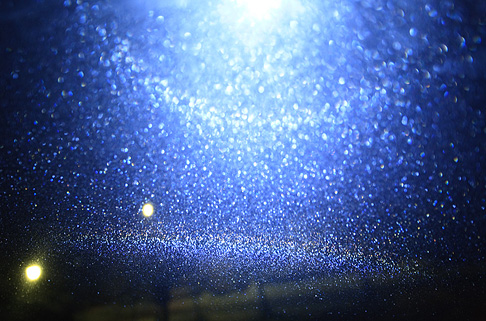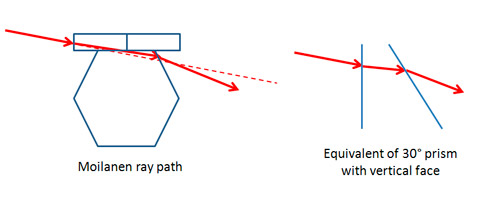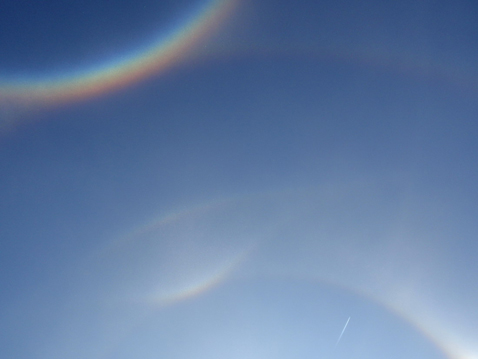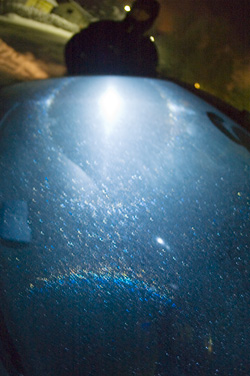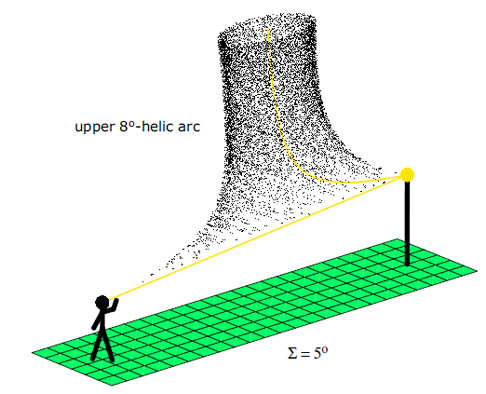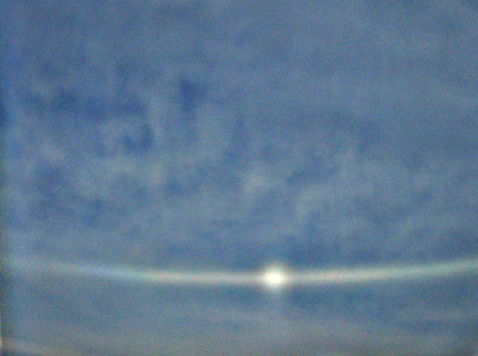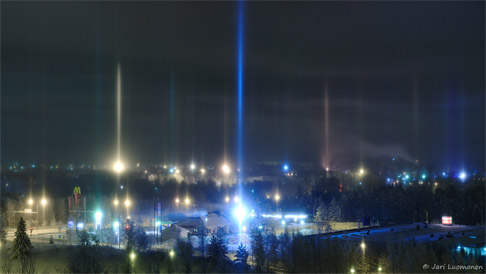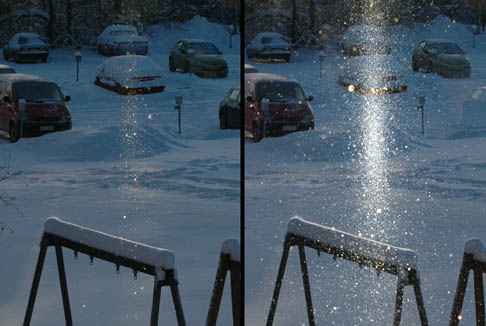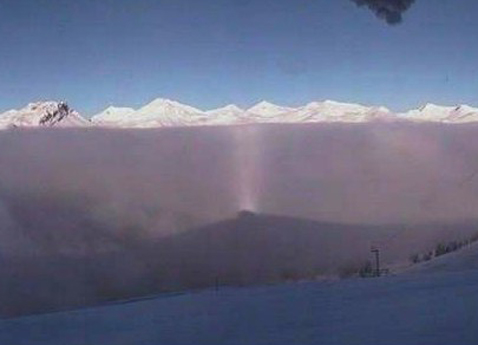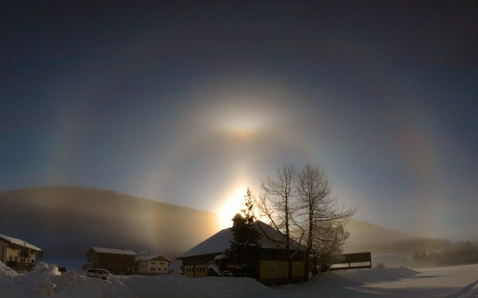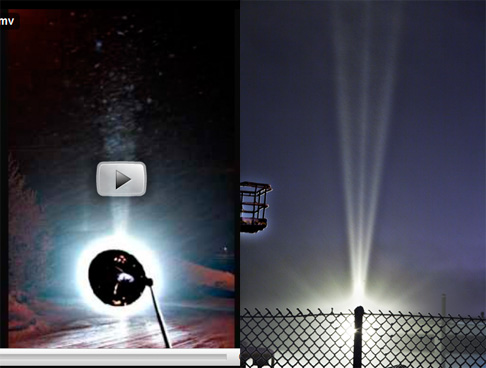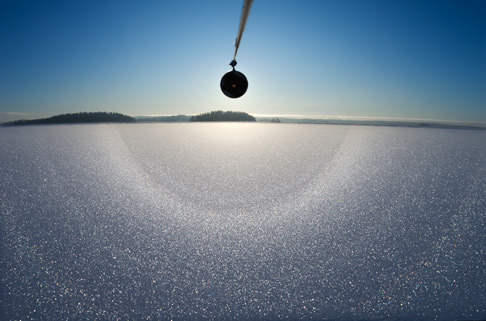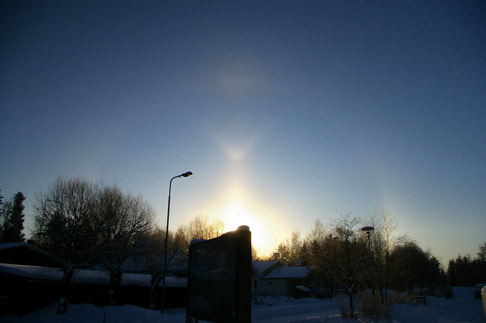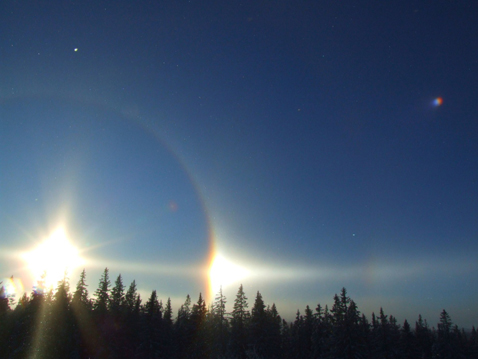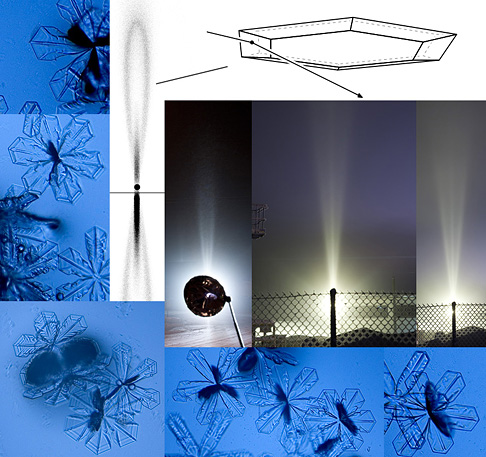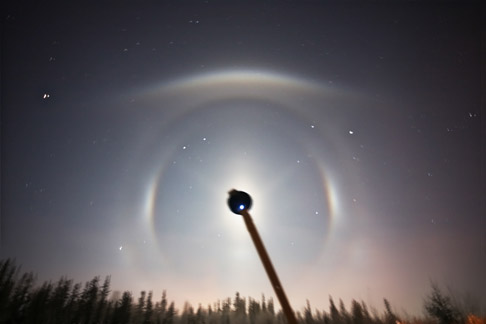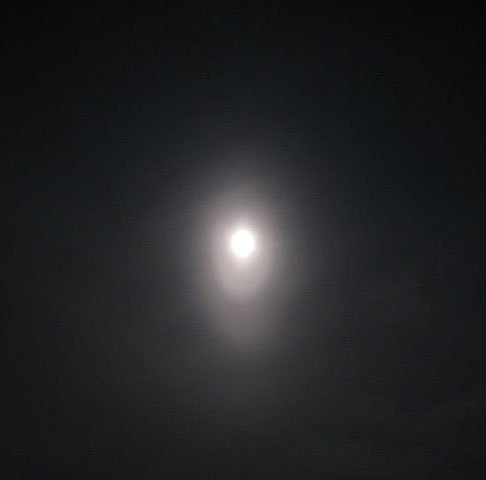I would like to present a possible explanation for the Moilanen arc. I have read about the existence of this unexplained arc a few weeks ago and tried to figure out possible explanations. After getting the reflected lower sunvex parry and some pyramidal arcs that were also looking like the Moilanen arc, I think I finally have a crystal that makes a very good candidate for the explanation of Moilanen arc.
Responsible crystalThe responsible crystal would be a crystal made of a two hexagonal usual hexagonal crystals stuck together. The simplest configuration would be the one of a plate crystal (called the main plate) with another plate or a column stuck on one of its base (called the stuck crystal).
Figure
1.
Condition of creation of Moilanen arcThe conditions for the creation of a Moilanen arc from this configuration are the following:
1: The main plate must be horizontal
2: The stuck crystal is on the inferior base of the plate
3: The bases of the stuck crystal must be perpendicular to two side faces of the main plate
1 and 2: this configuration is aerodynamically stable when stuck crystal is centered on the inferior base plate. To figure this, one can think of a paratrooper, the parachute being the plate crystal and stuck plate or column being the charge. So naturally the main plate will rotate so the stuck crystal is on the inferior base. Now why would the stuck crystal be centered on the main plate? I think that for this stuck crystal configuration to happen, the crystal density must be very high. So in the case of crystal swarms created by snow machine, the crystals would be stuck when they are small, just after their creation. So the growth of the crystal, will happen after. The growth being isotropic, the stuck crystal will naturally be centered on the main crystal. And the aerodynamically stable condition is the main plate being horizontal with stuck crystal on the inferior base.
3: I have to admit that the perpendicularity of the bases of the stuck crystal and two sides of the main plate is the most challenging point. My best explanation on this is that as the two components are crystals, there are definitely orientations of stucking that will be more stable. I hope that crystal experts will be able to help on this point to validate that this orientation is more likely to happen than any other. Crystal samples obtained during the display of 14th of December 2009 by Mika Aho, Ágnes Kiricsi and Marko Riikonen show some crystal looking very much alike the one described in the proposed explanation
Figure
2 and
3.
Ray path responsible of Moilanen arcThe ray path responsible of the Moilanen arc is the rays entering a vertical side face of the main plate and exiting the upper lateral side face of the stuck crystal. The prism angle in this configuration is 30° but with the entrance face vertical.
Figure
4.
Usually associated halosThis configuration of crystal is so still capable of producing all the plate arcs (parhelia, parhelic circle, circumzenithal arc, pillars, etc…) and also the Parry arcs (sunvex through the stuck crystal and suncave through the upper base of the plate and the stuck crystal. So this configuration seems to be well compatible with the halos usually observed with the Moilanen arc.
Spurious arcsI have been able to check it thoroughly but there does not seem to be any spurious arcs from this configuration. Spurious arcs would be created by rays entering side faces of the main plate and side faces of the stuck crystal. I will try to check it, but for the most simple other rays, it does not seem to exist direct ray path, at least if the stuck crystal is a regular hexagonal crystal.
Other rays would just create already known halos. Rays entering by the base of main plate and exiting by the sides of stuck crystal would create parry arcs, and by the base of main plate and exiting by the base of stuck crystal would create circumzenithal and supralateral arcs.
Distance from the sunThe distance between the apex of the Moilanen arc and the sun can be easily calculated using the 30° prism with vertical entrance face description. At low sun elevation, the distance is about 11°. It increases slowly to 13° at 10° solar elevation, 15° at 15° solar elevation, 18° at 20° solar elevation. As the sun elevation increases, the rays path becomes less likely because of the stucking area and also of the increased incidence on the exit face. The total internal reflection condition is met when the solar elevation is higher than 26°. This is in agreement with the fact that Moilanen arc are usually observed at low sun elevations.
Figure
5.
Shape evolutionI have made a simple ray tracing program to simulate the Moilanen arc shape. This simulation tool does not take into account the real crystal shape, only the relative orientation of the faces. The shape are represented for 0°, 3°, 6°, 9°, 12°, 15° and 18° solar elevation. The simulated shape matches very well the photographs of the arc, with a reduced curvature at higher solar elevation. The simulation shows the arc being more extended on the sides as I don’t take into account the real 3D shape of the crystal, but just the relative face orientation.
Figures
6,
7,
8.
ConclusionThe proposed explanation is based on a 30° prism which entrance face is vertical. In this explanation, the responsible is a horizontal plate on which is stuck a plate or column crystal. I think this type of crystal explains very well most (if not all) of the observed properties of Moilanen arc. More simulations to check that no spurious arcs arc created would help confirm this, as well as some insights of crystals experts on the probability of getting such configuration.
Nicolas Lefaudeux, January 29th 2010
